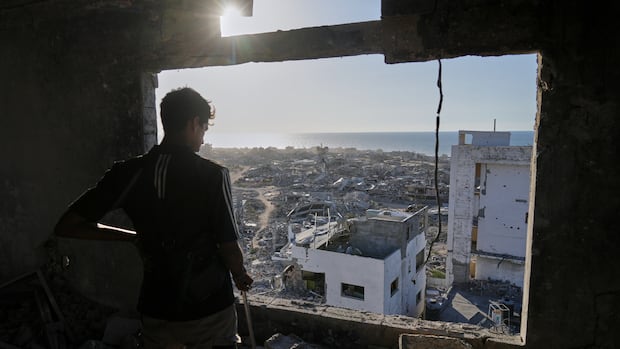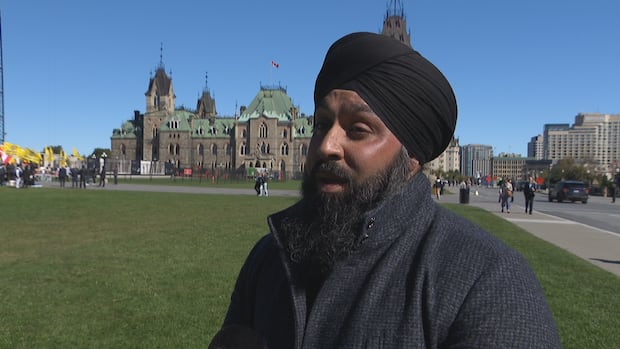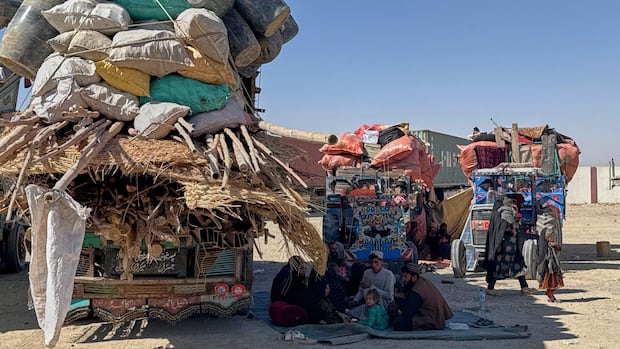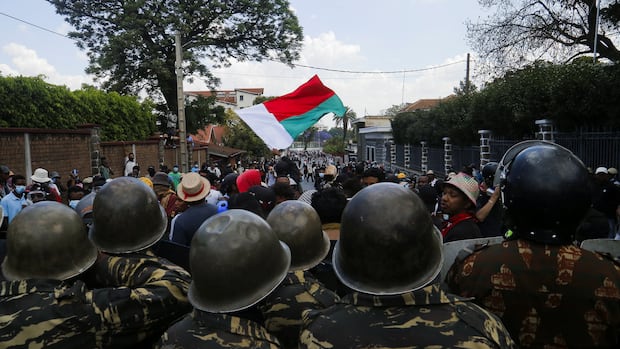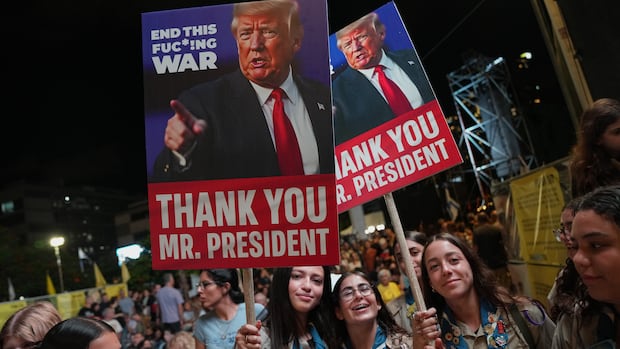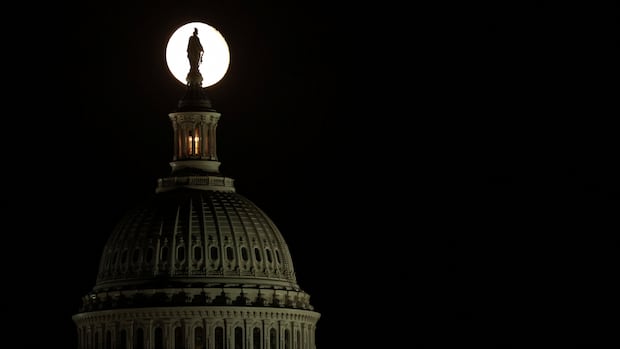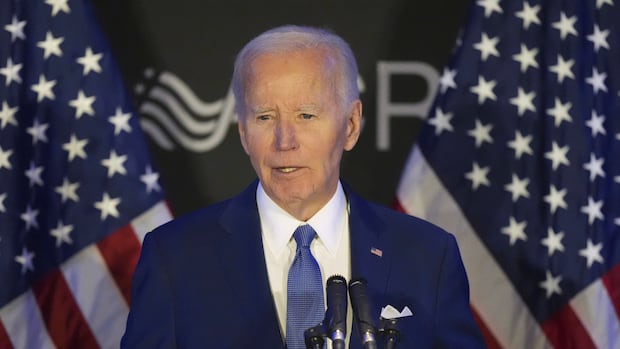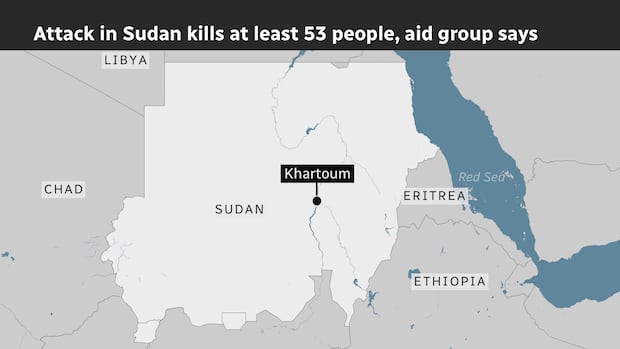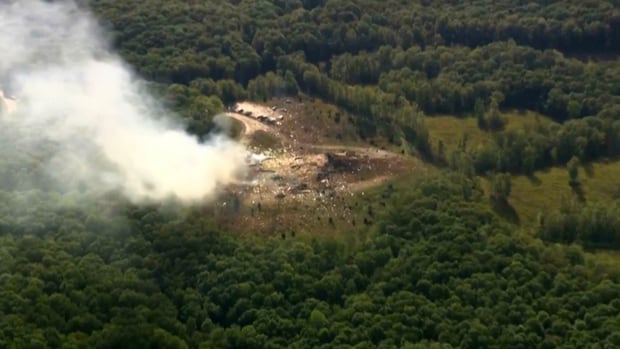Israel said Sunday that it expected all of the living hostages held in the Gaza Strip to be released on Monday, confirming the next phase of the breakthrough ceasefire deal with Hamas, as Palestinians awaited a long-promised surge of aid deliveries into the enclave.
The details emerged as the region prepared for U.S. President Donald Trump to visit Israel and Egypt — the latest in the swift flurry of developments since the ceasefire was announced last week, offering hope for an end to the two-year-old war.
“We are expecting all 20 of our living hostages to be released together at one time to the Red Cross and transported among six to eight vehicles,” Israeli government spokesperson Shosh Bedrosian said, noting that Israel did not expect militants to stage the exchanges in the same manner as previous rounds.
The hostages will be driven to a military base to reunite with their families or, if needed, immediately to a hospital, Bedrosian said.
After the hostages are freed, Israel is to release about 2,000 Palestinian detainees and receive the 28 hostages believed to be dead. The military planned to hold a ceremony on their behalf in Gaza, she said.
The dead are expected to be transferred to the Institute of Forensic Medicine for identification.
An international task force will start working to locate deceased hostages who are not returned within the 72-hour period, said Gal Hirsch, Israel’s co-ordinator for Hostages and Missing Persons.
Officials have said the search for the bodies of hostages, some of whom may be buried under rubble, could take time.
Meanwhile on Gaza’s borders, preparations were underway to ramp up aid entering the war-battered territory. The Israeli military body in charge of humanitarian aid in Gaza said the amount of aid entering the Palestinian territory was expected to increase on Sunday to about 600 trucks per day, as stipulated in the agreement.
WATCH | This is what Gaza looks like after 2 years of war:This is drone footage over the Gaza Strip — before and after two years of destruction from the Israel-Hamas war.Egypt said it was sending 400 aid trucks into Gaza on Sunday. Associated Press footage showed dozens of trucks crossing the Egyptian side of the Rafah border crossing. The Egyptian Red Crescent Society said the vehicles carried medical supplies, tents, blankets, food and fuel. The trucks will head to the inspection area in the Kerem Shalom crossing for screening by Israeli troops.
Expanding Israeli offensives and restrictions on humanitarian aid have triggered a hunger crisis, including famine in parts of the territory.
The United Nations has said it has about 170,000 tonnes of food, medicine and other humanitarian aid ready to enter once Israel gives the green light.
Abeer Etifa, a spokesperson for the UN World Food Program, said workers were clearing and repairing roads on Sunday inside Gaza to make way for the deliveries.
WATCH | 'The whole country is thrilled,' says father of freed Israeli hostage:Avihai Brodutch's wife and three children were taken hostage by Hamas during the attacks on Oct. 7, 2023. They were later freed after 51 days in captivity. Chief political correspondent Rosemary Barton speaks to Brodutch about his emotions as he awaits the release of all living hostages from Gaza. Gaza Humanitarian Foundation's future unclearThe fate of the Gaza Humanitarian Foundation (GHF), an Israeli- and U.S.-backed contractor that replaced the UN aid operation in May as the primary food supplier in Gaza, remains unclear.
Food distribution sites operated by the group in the southernmost city of Rafah and central Gaza were dismantled following the ceasefire deal, several Palestinians said Sunday.
GHF had been touted by Israel and the United States as an alternative system to prevent Hamas from taking over aid. However, its operations were mired in chaos, and hundreds of Palestinians were killed by Israeli gunfire while heading to its four sites. The Israeli military has said its troops fired warning shots to control crowds.
A GHF representative said in a statement that there might be “tactical changes in GHF operations and temporary closures of some distribution sites” during the transfer of hostages to Israel, but “there is no change to our long-term plan.”
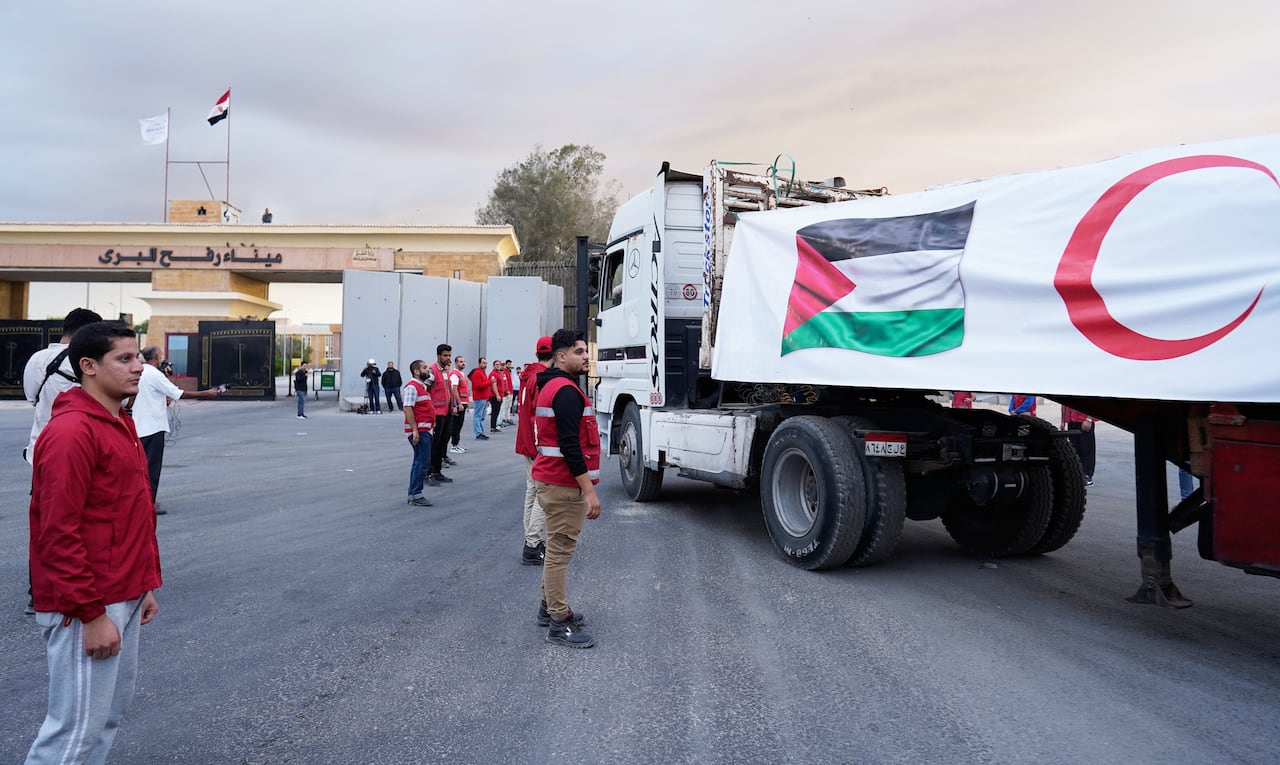 Egyptian Red Crescent members monitor trucks carrying humanitarian aid as they enter the Rafah crossing between Egypt and the Gaza Strip on Sunday, following a ceasefire agreement between Israel and Hamas. (Mohamed Arafat/The Associated Press)Preparations for Trump’s visit
Egyptian Red Crescent members monitor trucks carrying humanitarian aid as they enter the Rafah crossing between Egypt and the Gaza Strip on Sunday, following a ceasefire agreement between Israel and Hamas. (Mohamed Arafat/The Associated Press)Preparations for Trump’s visitTrump, who pushed to clinch the ceasefire deal, is expected to arrive Monday morning in Israel. He will meet with families of the hostages and speak at the Knesset, Israel’s parliament, according to a schedule released by the White House.
Trump will then continue to Egypt, where the office of Egyptian President Abdel-Fattah el-Sisi has said he will co-chair a “peace summit” on Monday with regional and international leaders. Canadian Prime Minister Mark Carney will also be in attendance.
Timing has not yet been announced for the release of the Palestinian prisoners held in Israel who are to be freed under the deal. They include 250 people serving life sentences, in addition to 1,700 people seized from Gaza during the war and held without charge.
Dr. Mounir al-Boursh, head of the Health Ministry in Gaza, said he hopes the bodies of medical personnel who died in Israeli detention centres will be among those handed over. He called for the release of two doctors from Gaza who were detained during the war.
Gaza residents return homePalestinians continued to move back to areas vacated by Israeli forces Sunday, although many were returning to homes reduced to rubble.
Satellite photos taken Saturday and analyzed by The Associated Press showed a line of vehicles traveling north to Gaza City along the strip’s coastline. Tents along the coast also could be seen near Gaza City’s marina, where many have been living to avoid Israeli bombardment of the city.
Armed police in Gaza City and southern Gaza patrolled the streets and secured aid trucks driving through areas from which the Israeli military had withdrawn, residents said. The police force is part of the Hamas-run Interior Ministry.
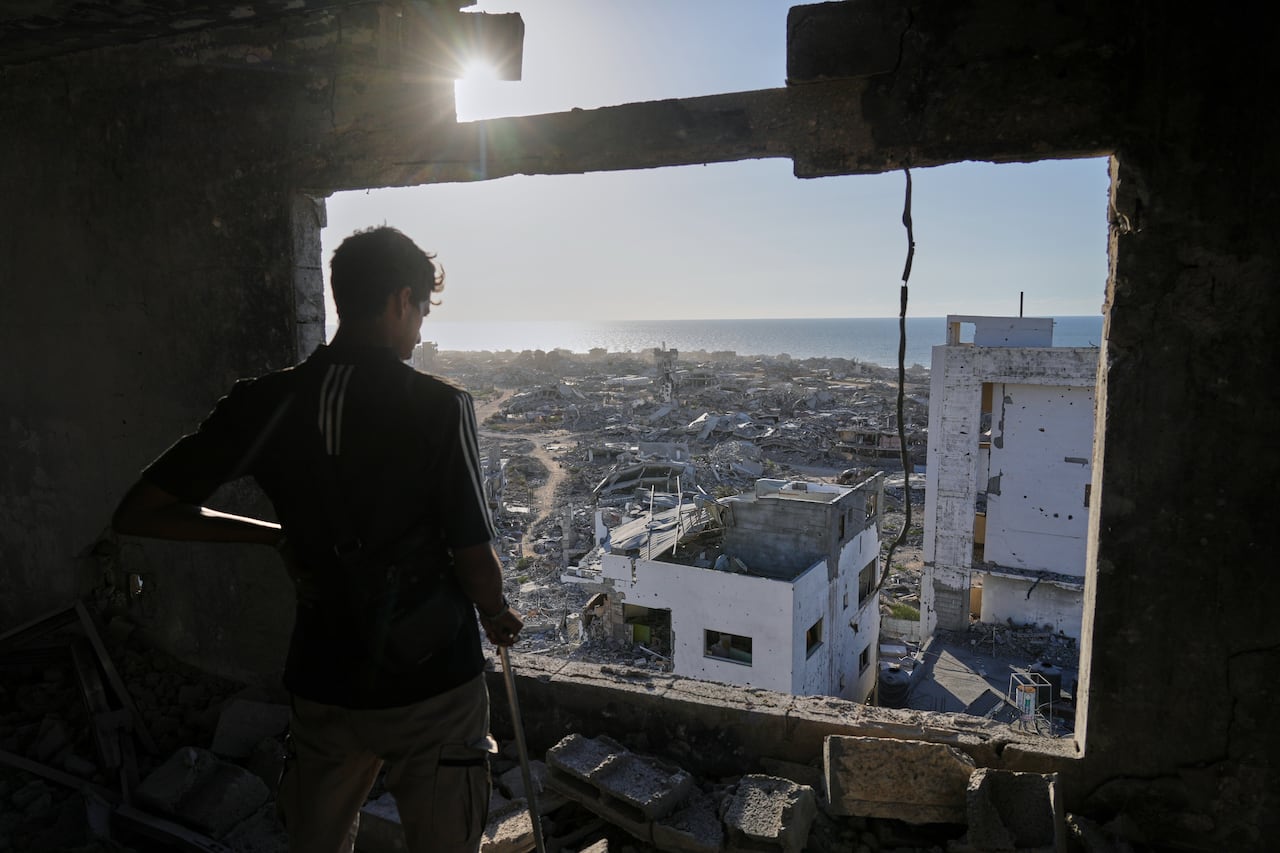 A man looks out from his damaged apartment at the destruction in his neighbourhood in Gaza City on Friday. He returned home following an agreement between Israel and Hamas on a ceasefire and the release of remaining hostages. (Jehad Alshrafi/The Associated Press)
A man looks out from his damaged apartment at the destruction in his neighbourhood in Gaza City on Friday. He returned home following an agreement between Israel and Hamas on a ceasefire and the release of remaining hostages. (Jehad Alshrafi/The Associated Press)The ministry said in a statement Sunday that it would allow members of armed gangs not involved in the killing of Palestinians to turn themselves in as early as Monday, “repent and be pardoned.” As for others, it noted some gangs took advantage of the situation to carry out extrajudicial activities.
The pause in fighting allowed first responders to search previously inaccessible areas for bodies buried under rubble. Health officials said 233 bodies were recovered and brought to hospitals since Friday, when the truce went into effect.
Yasser el-Bureis, who was at the morgue in Nasser Hospital in Khan Younis, said Sunday that he and his relatives had finally retrieved the bodies of his two cousins killed months earlier as they tried to flee their homes.
WATCH | Palestinian Canadian on his hopes for the ceasefire :CBC News chief political correspondent Rosemary Barton speaks to Tamer Jarada, a Palestinian Canadian who lost 18 family members during the conflict, about how he views the ceasefire deal and what it might mean for his family still in Gaza.“For five months, we didn’t manage to recover the bodies,” he said.
Hospitals have run short on supplies for both the living and the dead, including body bags.
Devastation from 2 years of warThe war began when Hamas-led militants launched a surprise attack on southern Israel on Oct. 7, 2023, in which some 1,200 people were killed and 250 taken hostage.
In Israel’s ensuing offensive, more than 67,000 Palestinians have been killed in Gaza, according to Gaza’s Health Ministry, which doesn’t differentiate between civilians and combatants but says about half the deaths were women and children.
The war has destroyed large swaths of Gaza and displaced about 90 per cent of its two million residents. It has also triggered other conflicts in the region, sparked worldwide protests and led to allegations of genocide that Israel denies.
While both Israelis and Palestinians in Gaza welcomed the initial halt to the fighting and plans to release the hostages and prisoners, the longer-term fate of the ceasefire remains murky. Key questions about governance of Gaza and the post-war fate of Hamas have yet to be resolved.
Israeli Defense Minister Israel Katz said on social media platform X that he had instructed the military to prepare to begin destroying the network of tunnels built by Hamas under Gaza “through the international mechanism that will be established under the leadership and supervision of the U.S.” once the hostages are released.


